Sense of an ending for Syria's war on Idlib front line
- Published
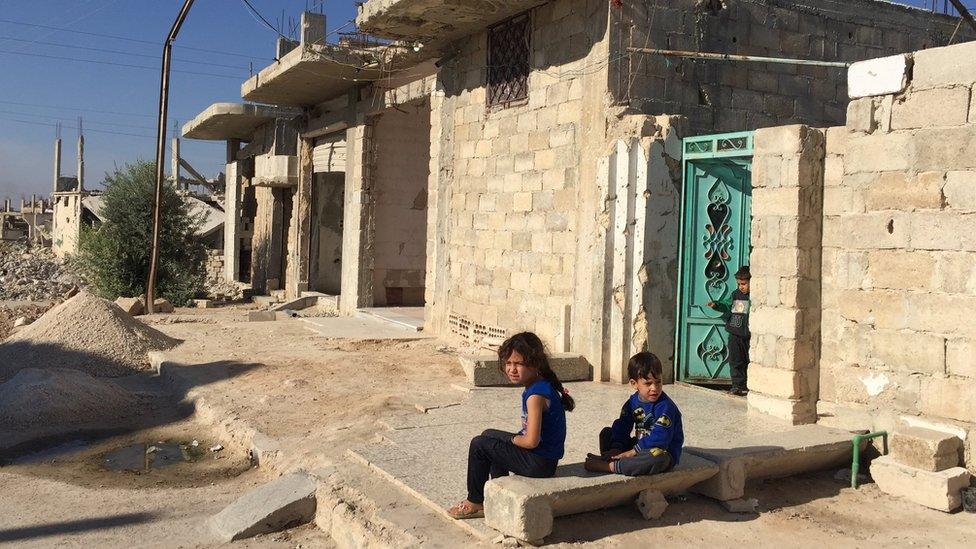
Half of Syria's pre-war population - more than 12 million people - have lost their homes
Maybe Idlib is where the war ends. Or perhaps it is where it reshapes itself to create a new agony for the Syrian people.
I travelled along the regime side of the front line around Idlib. It is a city and most of a province.
Three million civilians and perhaps 90,000 rebel fighters are inside its perimeter. It is estimated that they include a hard core of up to 20,000 jihadist extremists.
The war is in its eighth year.
The regime argues that it was always a foreign conspiracy designed to destroy Syria.
But early in the war I crossed into rebel-held areas to talk to protesters who chanted about freedom, who said they wanted the fall of the regime but not the destruction of their own country.
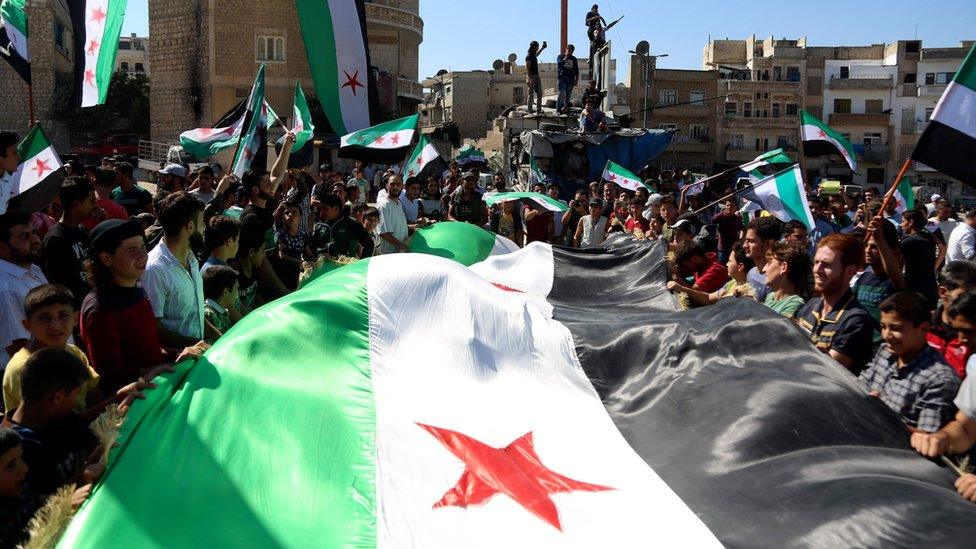
Opposition supporters have urged the international community to intervene
That feels like a long time ago.
The war has changed a lot, going through phases.
Rebel groups morphed into new alliances, splitting, coalescing and splitting again.
The regime always refused to differentiate between different rebels. For President Bashar al-Assad, they have all been terrorists.
But there were rebel fighters who were not extremists, who did not get the help they begged for from countries in the West who seemed to be obvious allies. They were squeezed out.
Commander Nabel is a Christian who fights alongside Assad's forces
The war, and the rebellion, at its end, has become a fight between the Assad regime and Islamist, sometimes jihadist, militias.
Since Russia intervened decisively in 2015, the Assad regime has been on the march, steadily rolling up rebel enclaves, big and small.
The strategies used have included negotiation, and the threat and use of overwhelming force.
The regime's victory in Aleppo at the beginning of 2016 was a decisive moment, as was the final defeat of the rebels around Damascus, along with the lightning offensive this last summer to recapture south-western Syria.


Now Idlib is the only large area held by anti-regime forces.
A shifting array of Islamist militias stares across the front lines.
The dominant one in Idlib is Hayat Tahrir al-Sham (HTS), which fields Syrian and foreign jihadists.
It is a rebranded version of al-Nusra Front, the al-Qaeda linked group in Syria that was designated as a terrorist organisation by the UN and many Middle Eastern and Western countries.
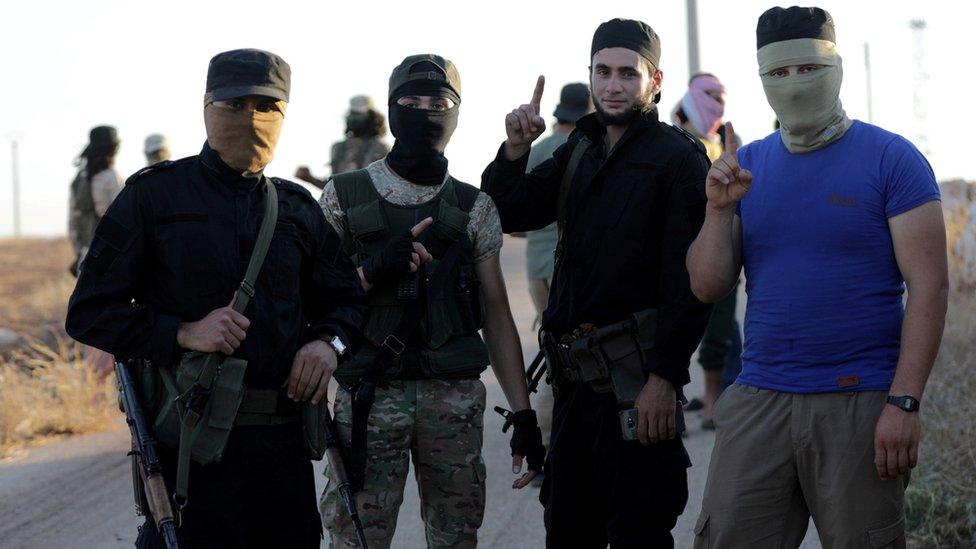
Hayat Tahrir al-Sham (HTS) is the most powerful force in rebel-held Idlib
The front-line positions I visited had big earth berms, with firing positions reinforced with sandbags and heavy lorry tyres.
Russian troops were also visible until they ducked back into their tents and dugouts to avoid being filmed.
It was hard not to think of all the different front lines that I had visited in this war, on both the regime and the rebel side, that have shaped the lives of a Syrian generation.
Young men on both sides who carry guns were children when the war started.
The destruction is terrible and the killing is the worst of it.
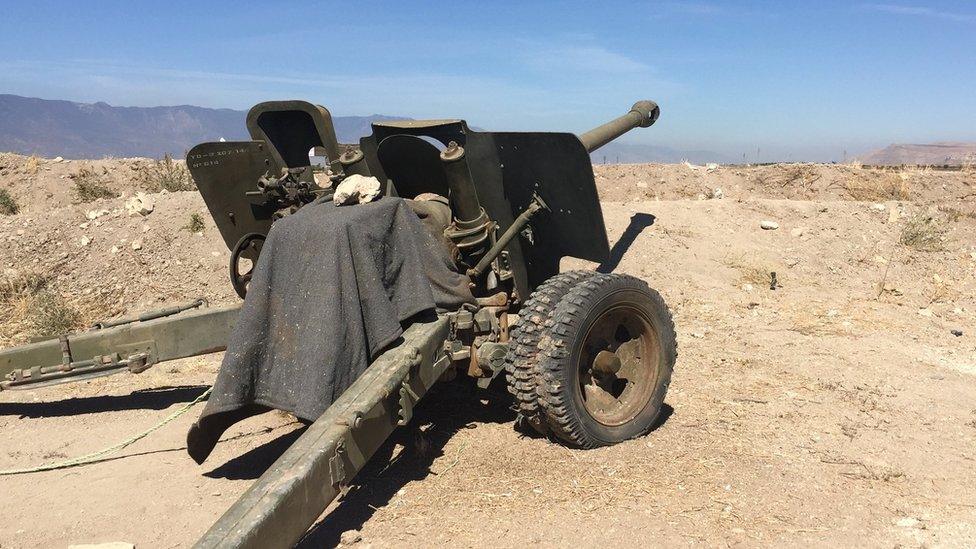
This week the guns in and around Idlib were silent
The best estimates are that there are half a million people dead. That total continues to rise.
At the end of all of this President Assad is still going to be in power, strengthened by victory.
His regime came under severe pressure and prevailed at a terrible cost.
Human rights groups, in studies they say are well authenticated, say Syrian government forces have, by far, been the biggest killers in the war.
I have put that charge to Syrian generals in the ministry of defence and officers in the field. They have denied it, asking why they would want to kill their own people.
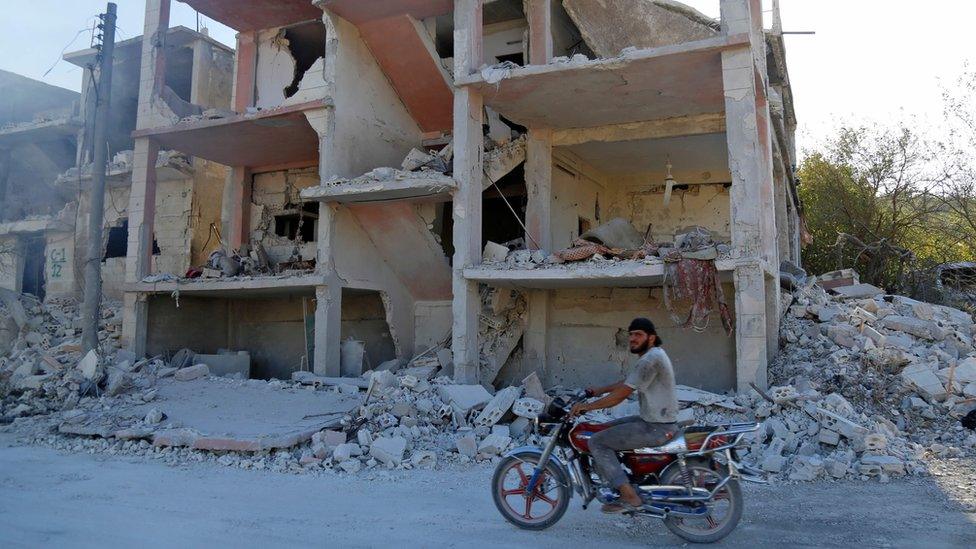
Years of Syrian government and Russian air strikes have left their mark on Idlib
Village after village around Idlib is in ruins, and virtually deserted.
Driving through them I wondered what had happened to the people who lived there once.
They are all displaced. Some must be refugees abroad and some must be dead.
The fighting has ebbed and flowed through their old homes, leaving behind a tide of empty, broken ghost towns.
Half of Syria's pre-war population - more than 12 million people - have lost their homes in the war.
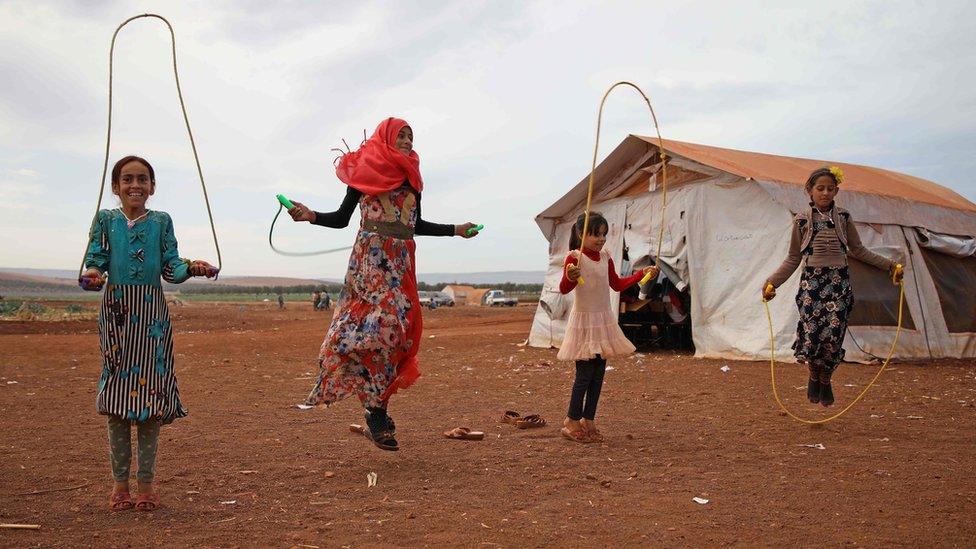
The UN says Idlib is home to some 2.9 million people, including 1 million children
This week the guns in and around Idlib were silent.
About now, the Syrian Arab Army and its Russian and Iranian allies were supposed to be on the offensive.
The size of Idlib and the numbers of rebel fighters there suggested that the fight would be bloody, even by the standards of Syria.
But the offensive was postponed after Russia and Turkey agreed to establish a demilitarised zone around the province.
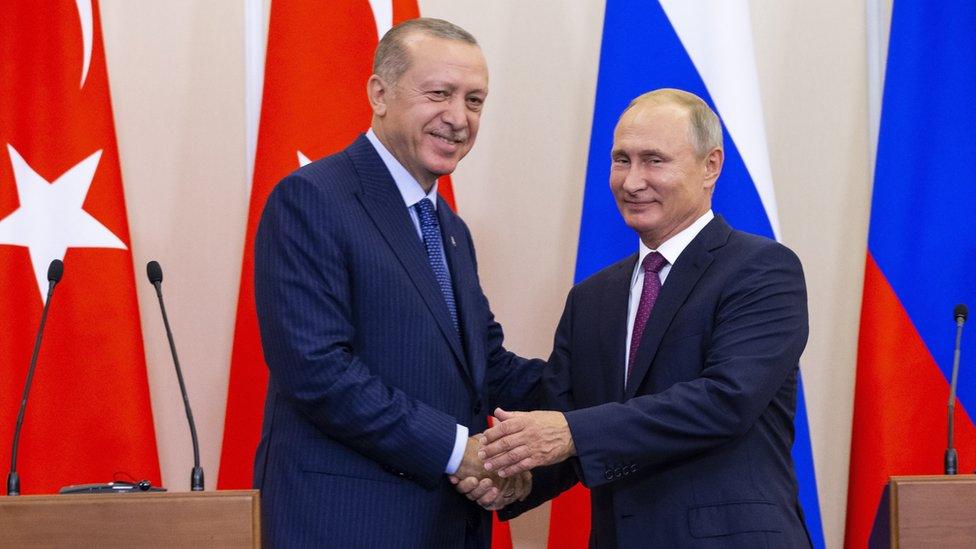
The Turkish and Russian leaders agreed last month to create a demilitarised zone in Idlib
All rebel groups have been told to pull their heavy weapons out of the zone by Wednesday. "Radical" groups, including HTS, must also withdraw their fighters by 15 October.
So far, only a rebel alliance backed by the Turks has said it has complied.
But there are reports that other groups, including HTS, have removed their heavy weapons.

Rebel forces have reportedly withdrawn their heavy weapons from the front line
Turkey has been trying to find ways to cajole and threaten HTS and the other jihadist diehards to go along with the plan.
They might, to gain time ahead of the final showdown with the regime.
If they do not, another round of fighting before the end of the year will be hard to avoid, with all that entails - more dead civilians, more homes lost, more horror and more pain.
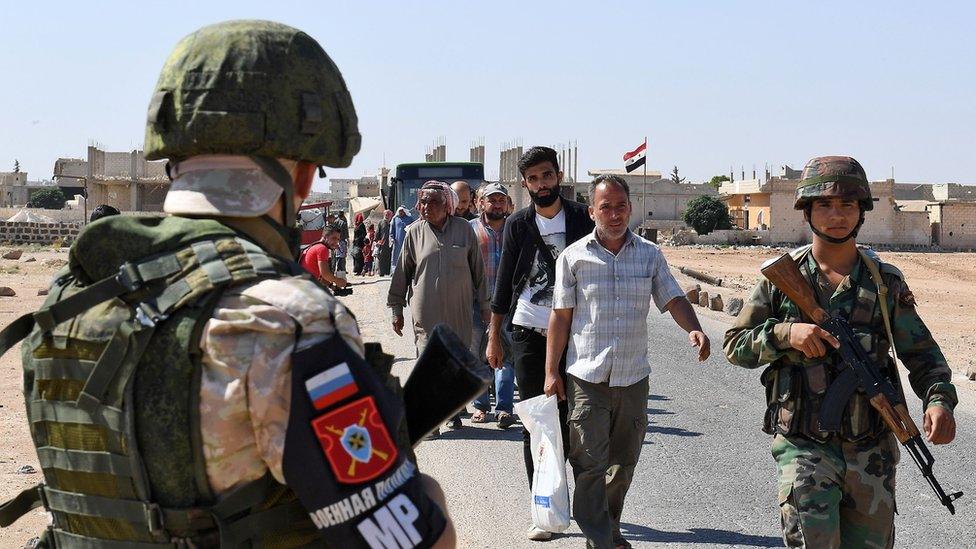
Russian forces have played a key role in consolidating the Syrian president's position
A sense of an ending is everywhere in this country.
The regime has almost put down the rebellion. But do not forget there are many more ways to spill blood in Syria.
Major foreign powers are occupying or bombing parts of the country, and there is a strong risk of escalation when they bump up against each other.
The Kurds have carved out territory that they will not give up easily.
And the nightmare of one big battle in Idlib is still to come.

Bashar al-Assad has said the demilitarised zone is just a "temporary measure"
At the centre of it all are President Assad and his extended family.
The fall of the Assads was predicted, assumed, in the West for many years, but they have survived and thanks to the help of the Russians and the Iranians they are getting stronger.
Some in the West argue that the time has come to do business with them, to recognise reality and, however reluctantly, get on with the future.
For President Assad international rehabilitation really would be victory.
For all those who have suffered at the hands of the regime and its forces, it would be a terrible conclusion to so many bloody years.